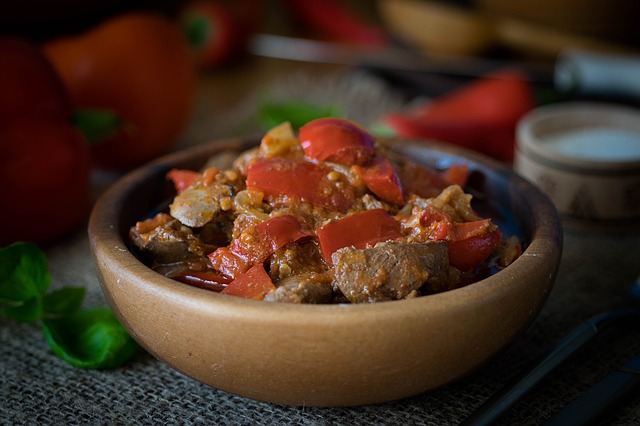Chicken Liver Dish: A Great Food During Breastfeeding

Chicken Liver Dish: A Great Food During Breastfeeding
After the birth of my first child, I developed a craving for a chicken liver dish. Some women eat cake and other sweets in those sleep-deprived weeks, but my body was screaming for satisfying, nutrient-packed meals.
Breastfeeding women are known to have higher energy requirements – more than 2,000 kJ/day compared to the average recommended dose for women. It requires an increased intake of certain nutrients such as calcium, iron, zinc, B vitamins, and vitamin A.
My mother and grandmother ate a lot of food while breastfeeding. Its main ingredient is liver – an organic meat that is rich in protein, folic acid and vitamins A and B12, and contains up to three times the amount of iron found in beef steaks.
- Why am I still breastfeeding my three children
- Why does my child want to eat all night?
At the time, I was faced with the choice of purchasing an expensive prepackaged gourmet bowl from a local food store ($16 for a jar, thanks so much!) or a variety of liqueurs containing any number of preservatives and thickeners. Material Included! Super Market.
So I decided to make it myself. Between lack of sleep and irregular breastfeeding patterns, it turns out to be one of the most satisfying and worthwhile discoveries.
Now, when a girlfriend gives birth, she is my favorite food.
Pate is one of those special dishes that can blend cheap and mediocre ingredients into something luxurious and decadent. It is quick to prepare and can be kept in the refrigerator for a week. It’s also perfect for a decadent last-minute snack, and can make for a nutritious meal if you’re holding your baby on your hip.
Traditional recipes were based on a 2:1 meat-to-fat ratio, the fat being schmaltz (or chicken fat) in Jewish cuisine and butter or cream in French. The most common basic recipes call for minced meat flavored with lard or bacon.
With that in mind, you can see why the items sold in supermarkets are so different; Hydrogenated vegetable oils, gelatin, soy protein, emulsifiers, flavor enhancers and thickeners—these ingredients seek to mimic the luxurious mouthfeel of traditional ingredients, but don’t hit the mark.
The main component of a good duck is the liver. I agree, it’s one of those ingredients that can quickly become a hydrating agent for dinner party conversations. If you tell your guests that they are kissing through a leg of lamb they won’t blink, but if you tell them there is a lever at the table they can skip it.
But liver is one of the most nutrient-dense and undercooked organ meats. High in protein and folic acid, it is one of the best sources of iron and also contains a high amount of vitamins A, B and C. If you have a tight budget for meat, these are delicious, nutritious and frugal cuts.
Tips for making your own
Ask the butcher for the liver, but make sure it’s from real birds – toxins can build up in the liver, so it’s important for birds to have normal livers, with minimal exposure to agricultural chemicals. Class diet.
It is necessary that the liver was really fresh. It should be a deep, shiny pink, with no gray parts or discoloration. The green parts (from the gallbladder) should be removed as they will add a bitter taste. Within a few days, the liver smell will start to be strong and develop. It is not harmful but the taste will not be good.
Peat can be made using a variety of techniques. The traditional Jewish method involves chopping the cooked liver into a paste and adding onions, eggs, and Schultz, with just salt and pepper to taste; The French method relies heavily on butter and cream, along with a variety of seasonings.
But regardless of the varieties and cooking methods, humble homemade paté is all about assembling a few simple ingredients to advance the enjoyment of good food. Outrageous and unutterable ingredients are combined to make something delicious.
Leek and butter pat
Cooking time: 10 minutes
Cooling time: 1 minute
Material
1 small leek, finely chopped
200g butter, roughly cut into cubes
50gm of chicken fat or butter for frying
500 grams of fresh chicken liver (about 2 cups), cut into 1 cm pieces.
1/3 clove of nutmeg, finely grated
1/4 cup brandy
1 large bunch of curly parsley leaves, coarsely chopped
Salt and pepper to taste
road
1. To clean rivers, use a small, sharp knife to remove and scrape any white strings. Trim off any green spots.
2. Cooking on low heat with 50 grams of butter or fat. Stir regularly with a wooden spoon, and remove from heat when golden brown. to cancel.
3. Place the brandy and liver by the stove ready to cook. Place a large skillet over high heat, add the liver, follow with the brandy, and reduce to set. This should set fire to the meat. Shake the pan until the flame burns (about 5-10 seconds).
When the liver is 90% cooked (its center may still be a little pink), remove it from the pan. This should take a minute or two. It is important not to overcook the liver. If the liver is completely brown, it means that it has been overcooked and may taste chewy. Place the liver in a large dish and leave to cool until it reaches room temperature.
4. In a food processor, combine shallots, liver and remaining ingredients. Process on high speed until the mixture becomes a smooth paste. Season to taste.
5. Transfer the mixture to sterilized glass jars. To prevent oxidation on top of the meat, add some chicken fat as an inner seal. refund immediately.
Makes: 4 bottles of 200 ml